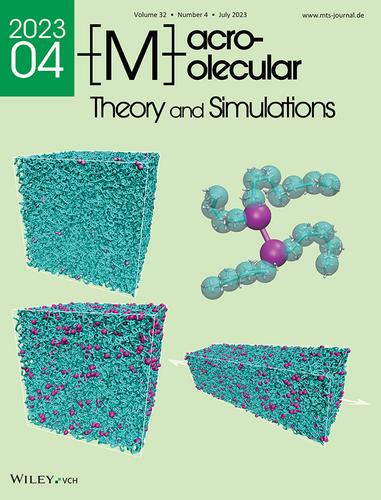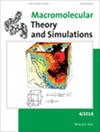用耗散粒子动力学分离交联密度对等规聚丙烯力学性能的影响
IF 1.6
4区 工程技术
Q3 POLYMER SCIENCE
引用次数: 0
摘要
封面:在2300014号文章中,Yoshitake Suganuma和James A. Elliott用耗散粒子动力学(DPD)方法研究了交联密度对等规聚丙烯(iPP)力学性能的影响。采用贝叶斯优化方法,从iPP的全原子模型出发,得到了具有不同交联数(品红球)的iPP(蓝链)粗粒结构,并在DPD模拟中进行了拉伸试验。本文章由计算机程序翻译,如有差异,请以英文原文为准。

Isolating the Effect of Crosslink Densities on Mechanical Properties of Isotactic Polypropylene Using Dissipative Particle Dynamics
Front Cover: In article number 2300014, Yoshitake Suganuma and James A. Elliott investigate the effect of crosslink density on mechanical properties of isotactic polypropylene (iPP) by the dissipative particle dynamics (DPD) method. Coarse-grained structures of iPP (blue chains) with different numbers of crosslinks (magenta spheres) are developed from an all-atom model of iPP by Bayesian optimization, and their tensile tests are performed in DPD simulations.
求助全文
通过发布文献求助,成功后即可免费获取论文全文。
去求助
来源期刊

Macromolecular Theory and Simulations
工程技术-高分子科学
CiteScore
3.00
自引率
14.30%
发文量
45
审稿时长
2 months
期刊介绍:
Macromolecular Theory and Simulations is the only high-quality polymer science journal dedicated exclusively to theory and simulations, covering all aspects from macromolecular theory to advanced computer simulation techniques.
 求助内容:
求助内容: 应助结果提醒方式:
应助结果提醒方式:


